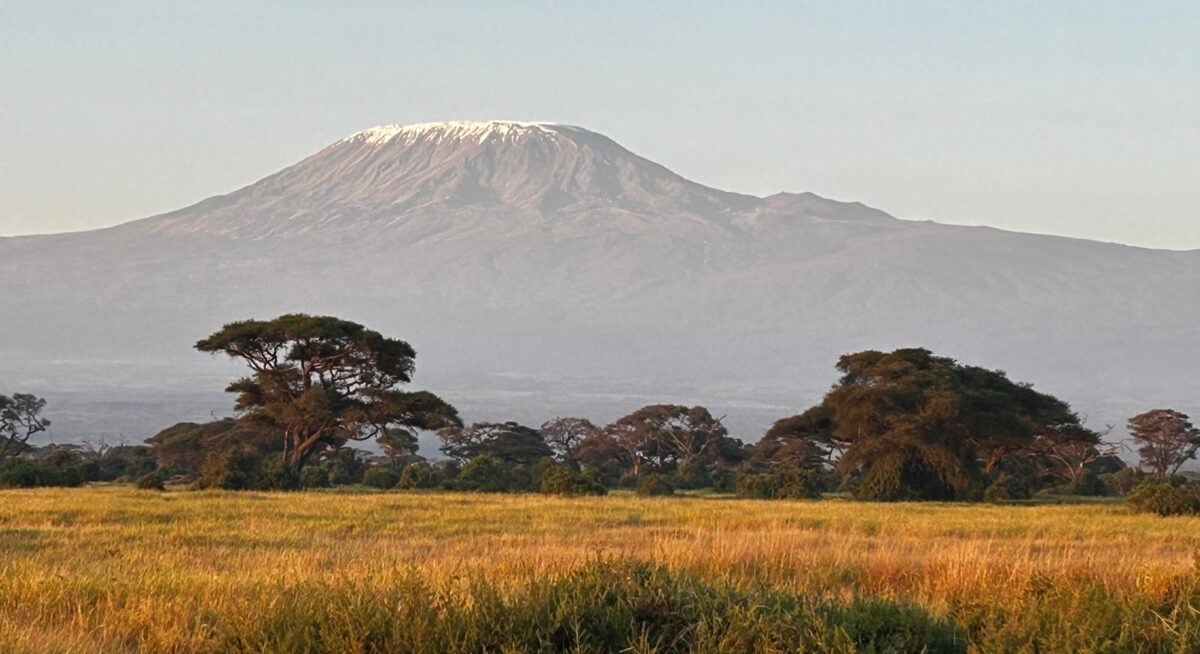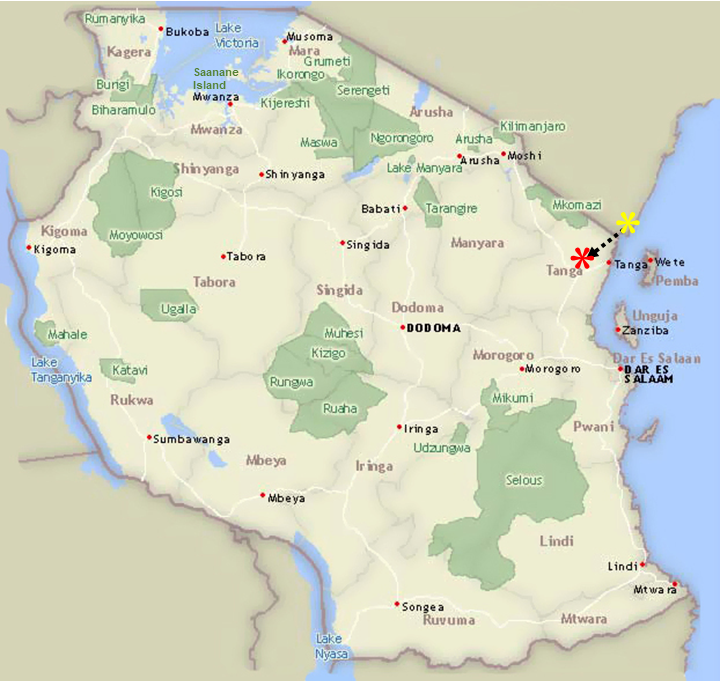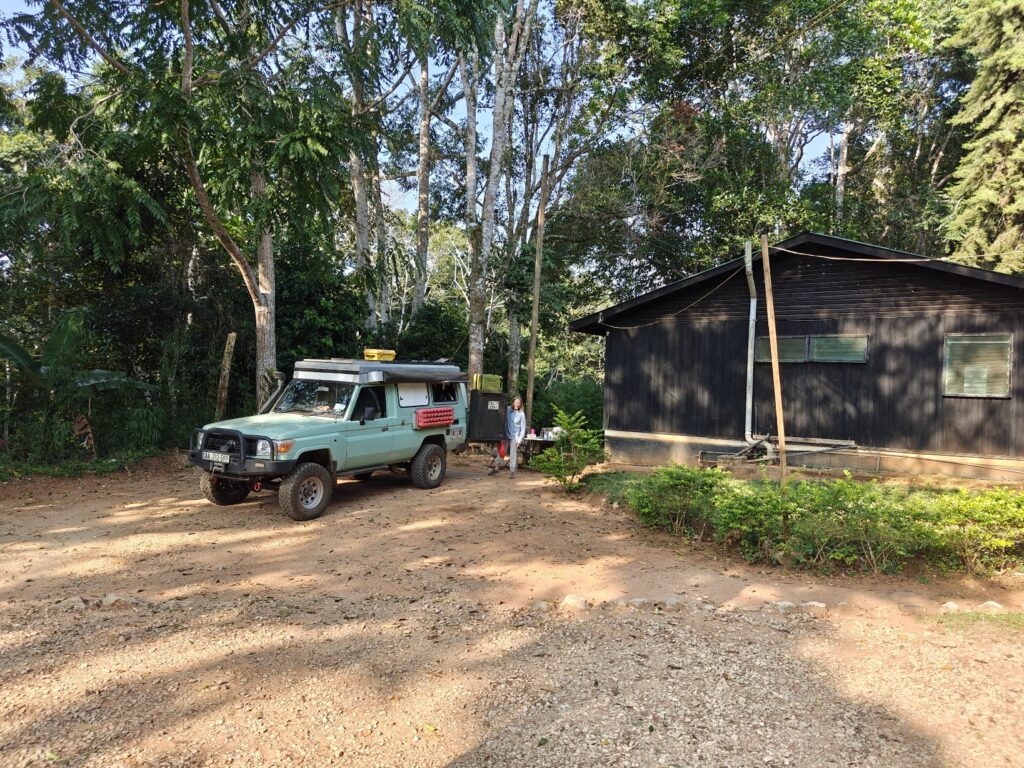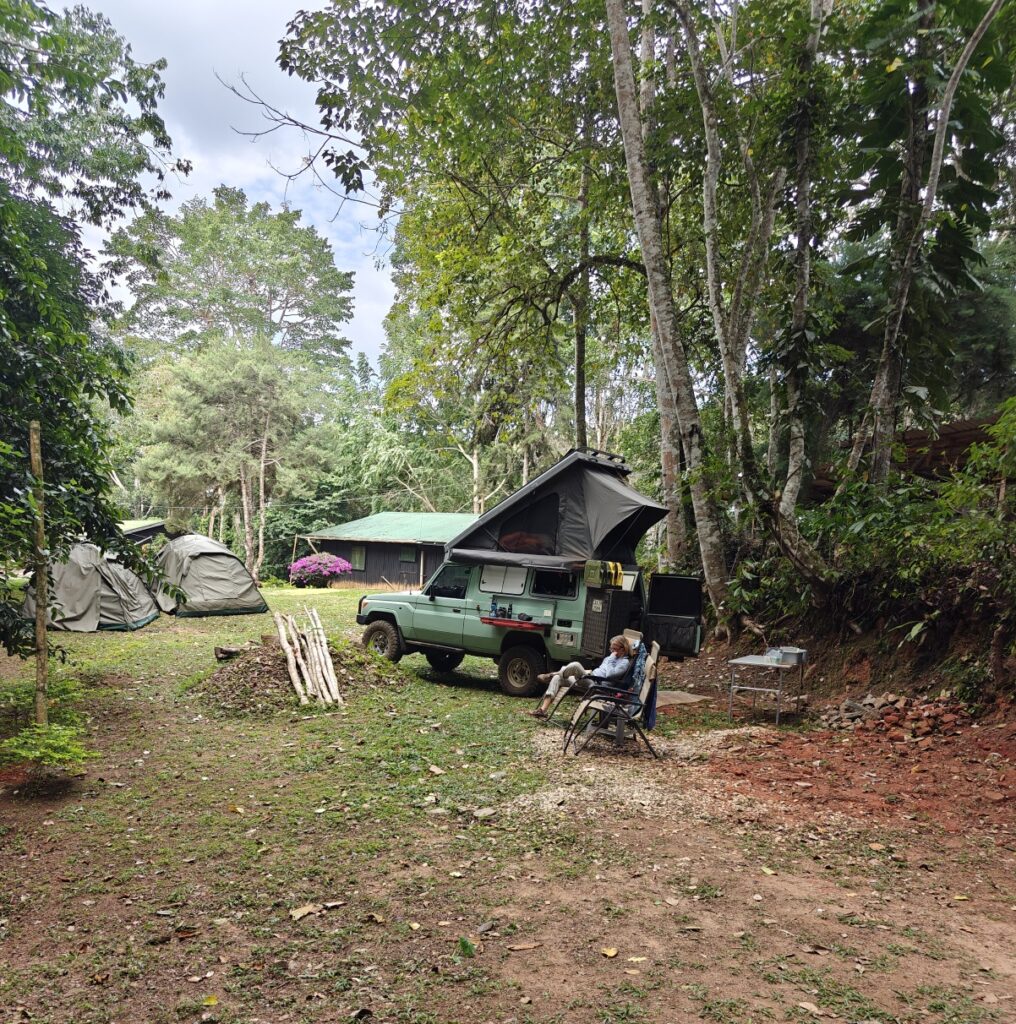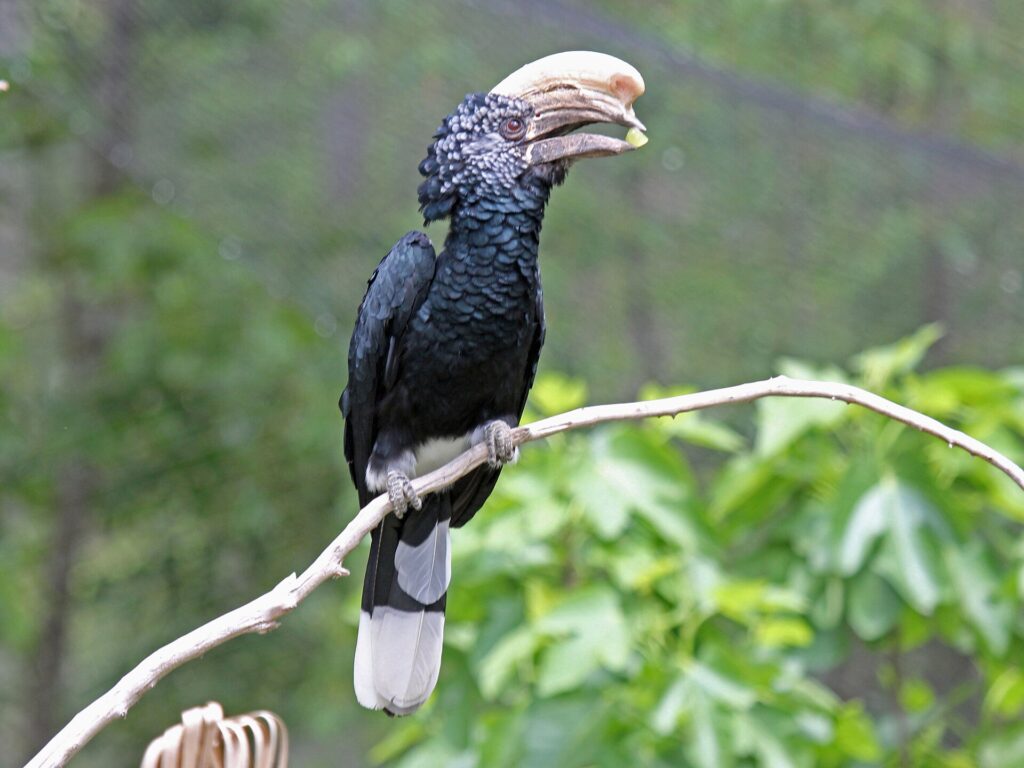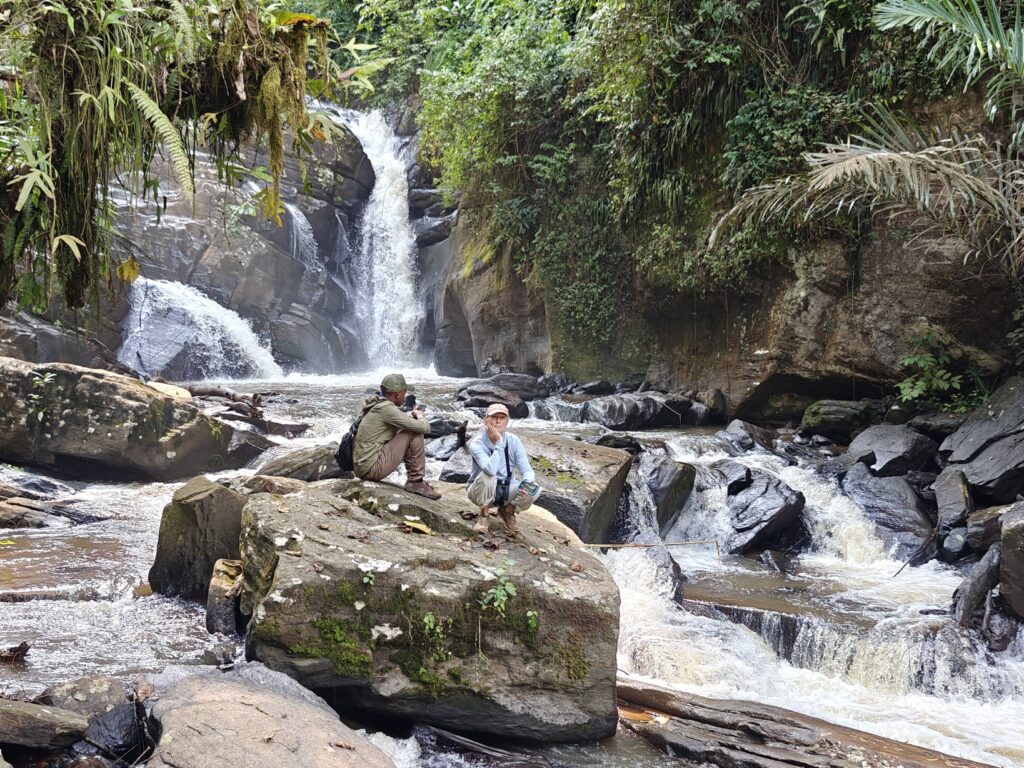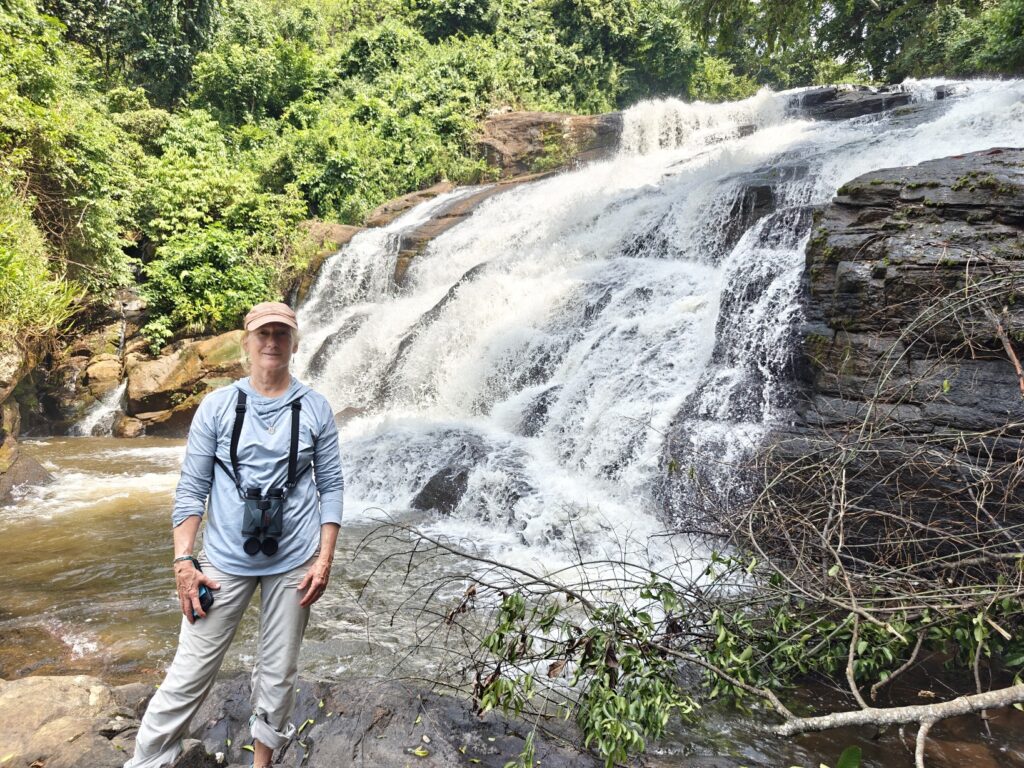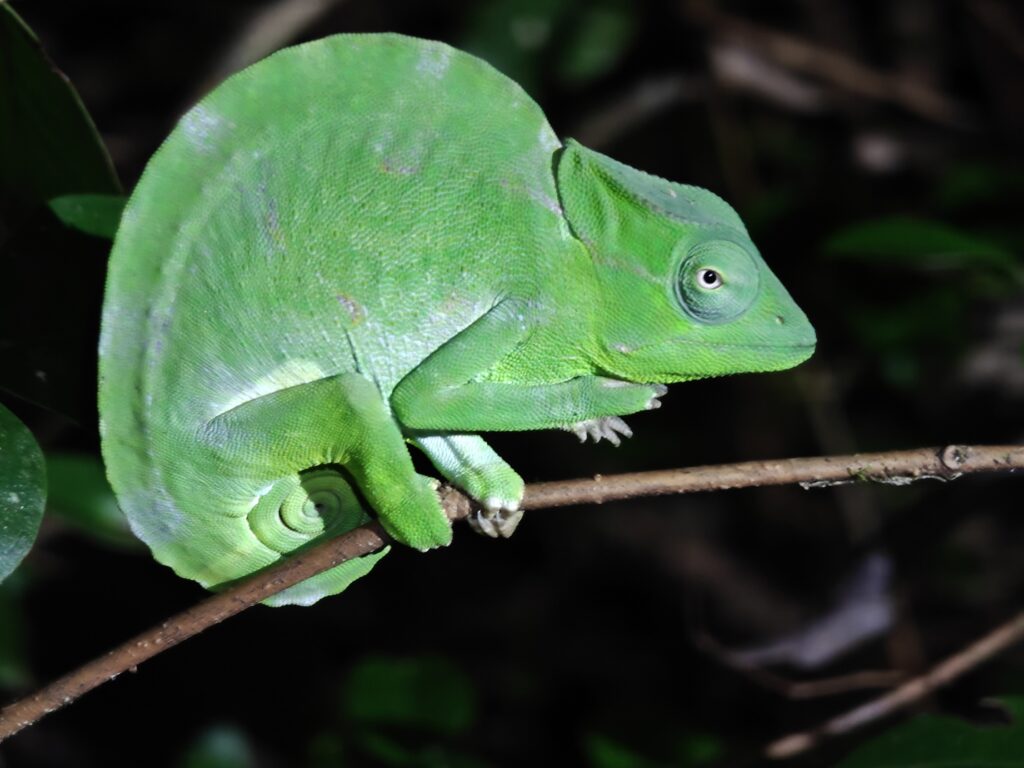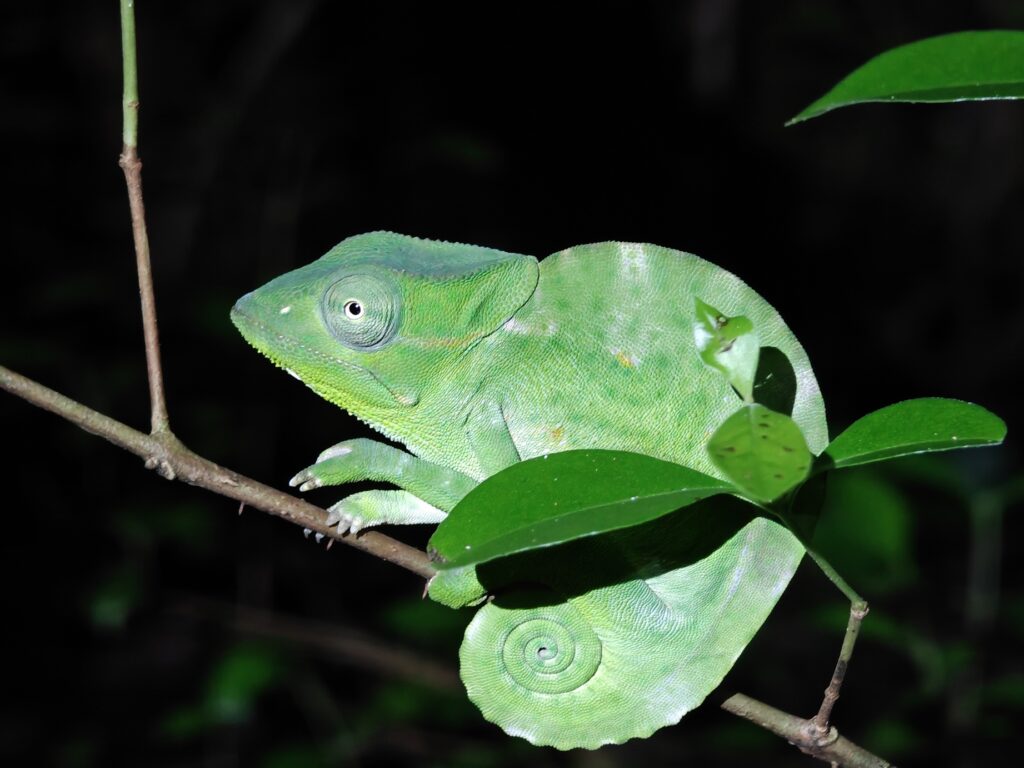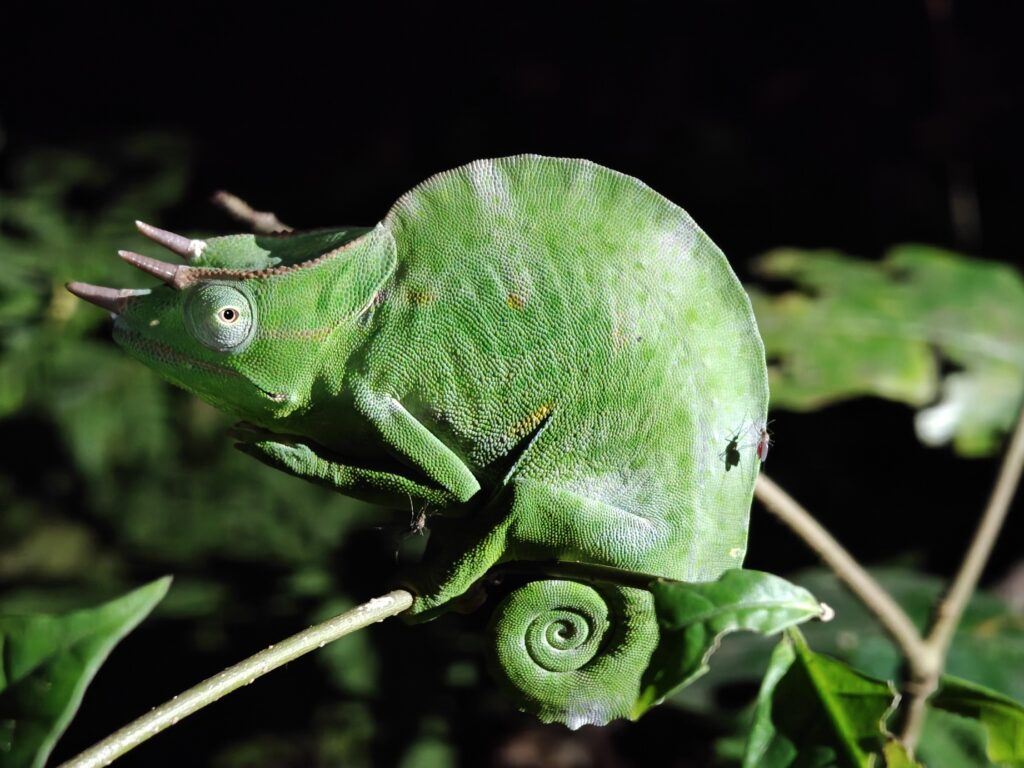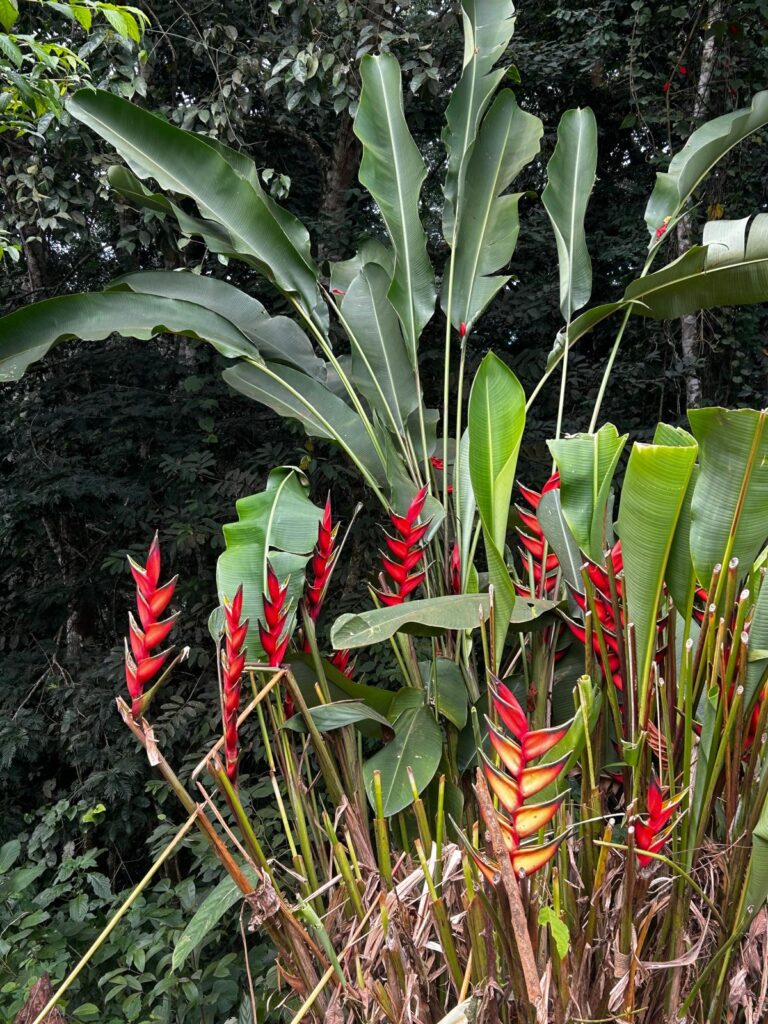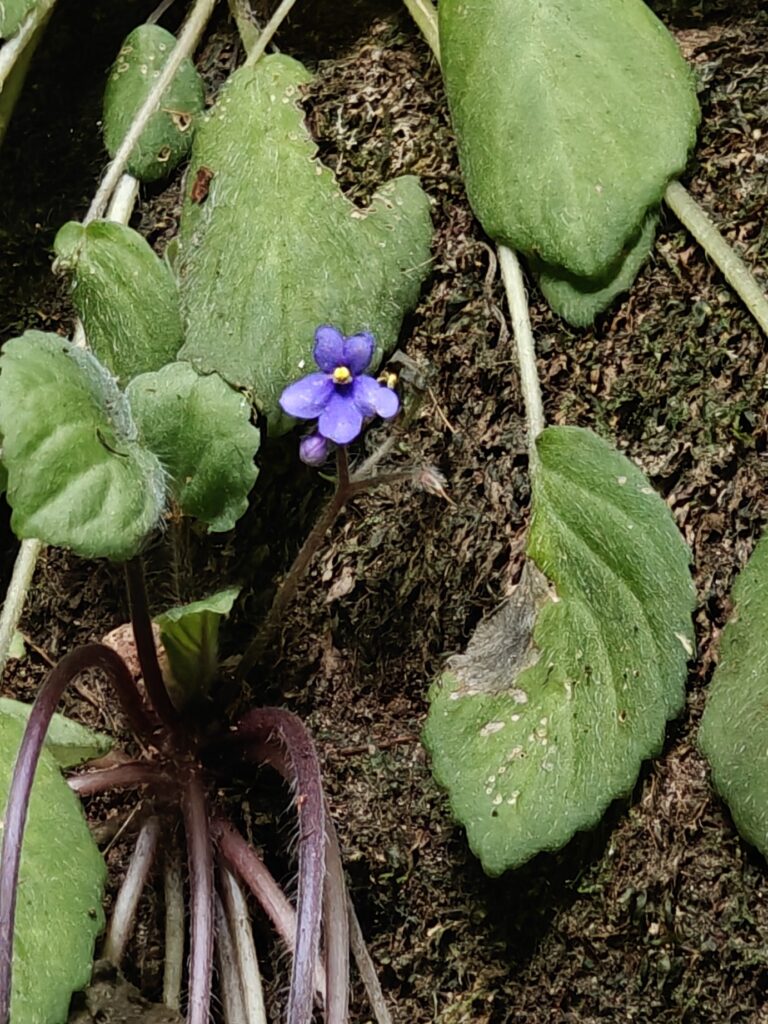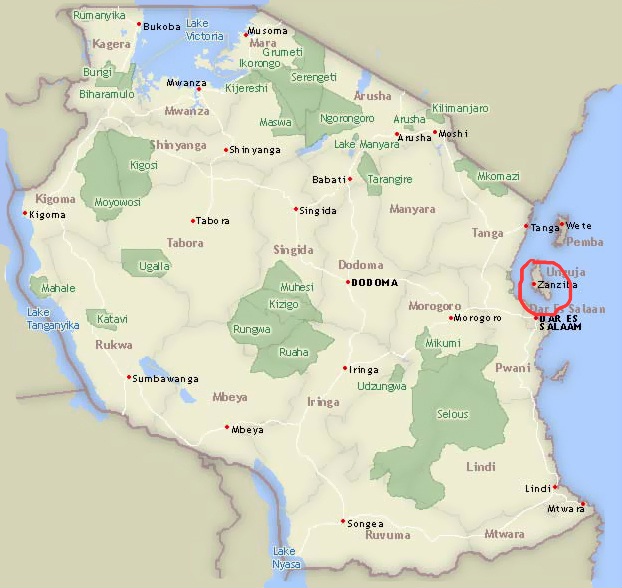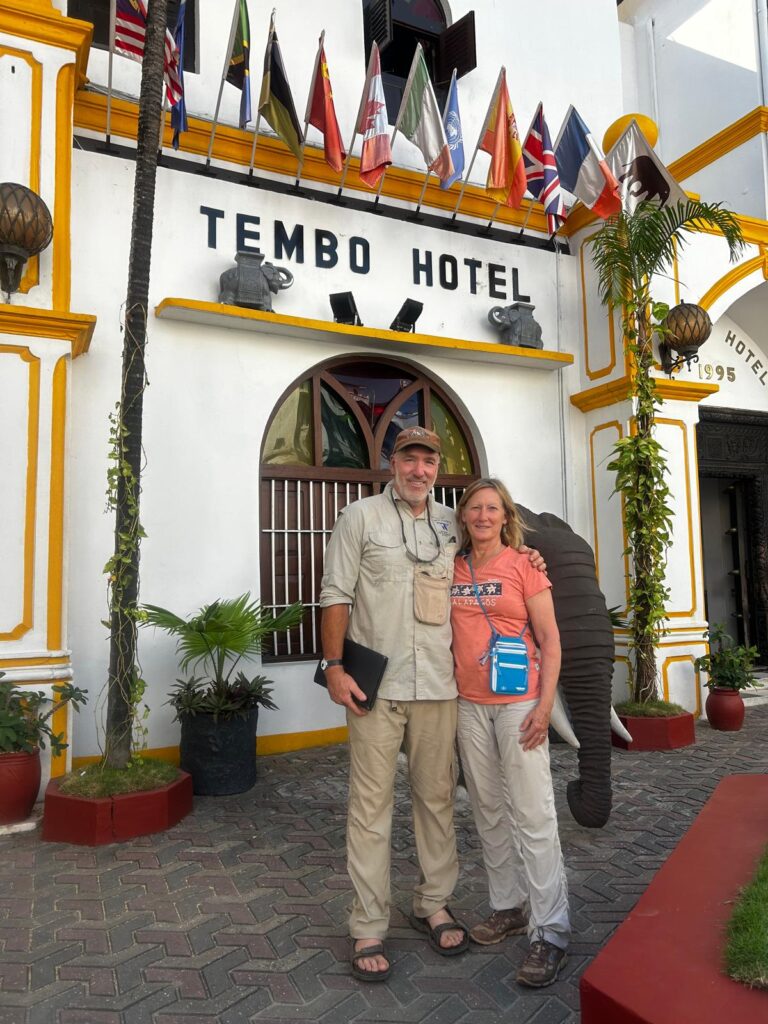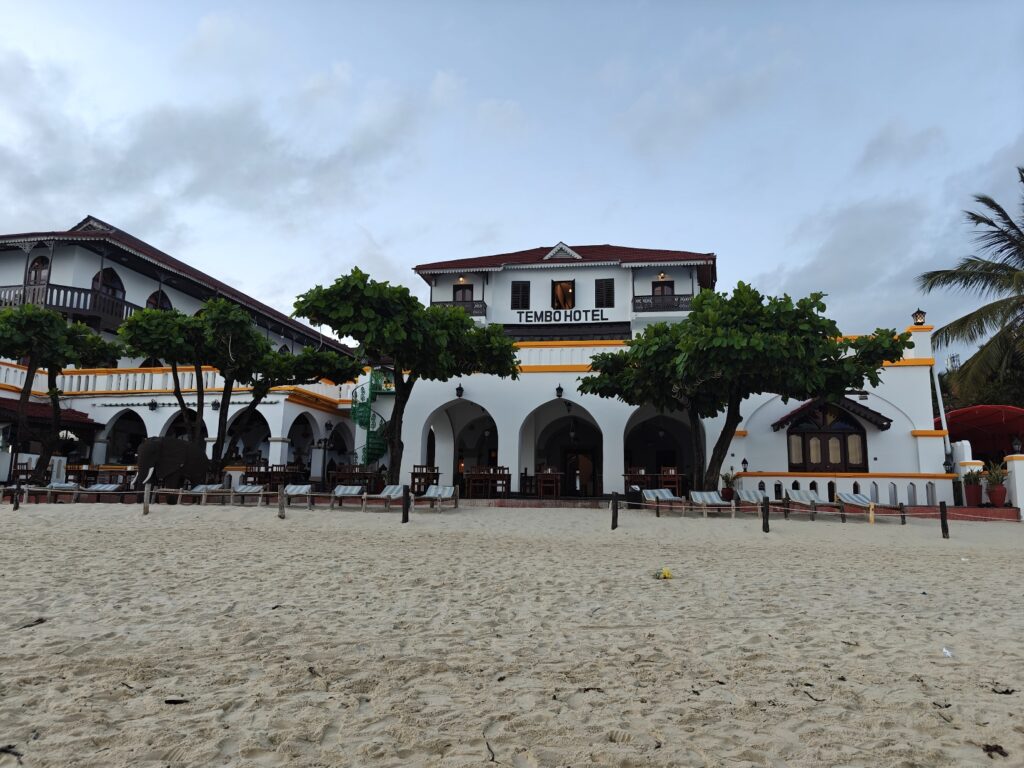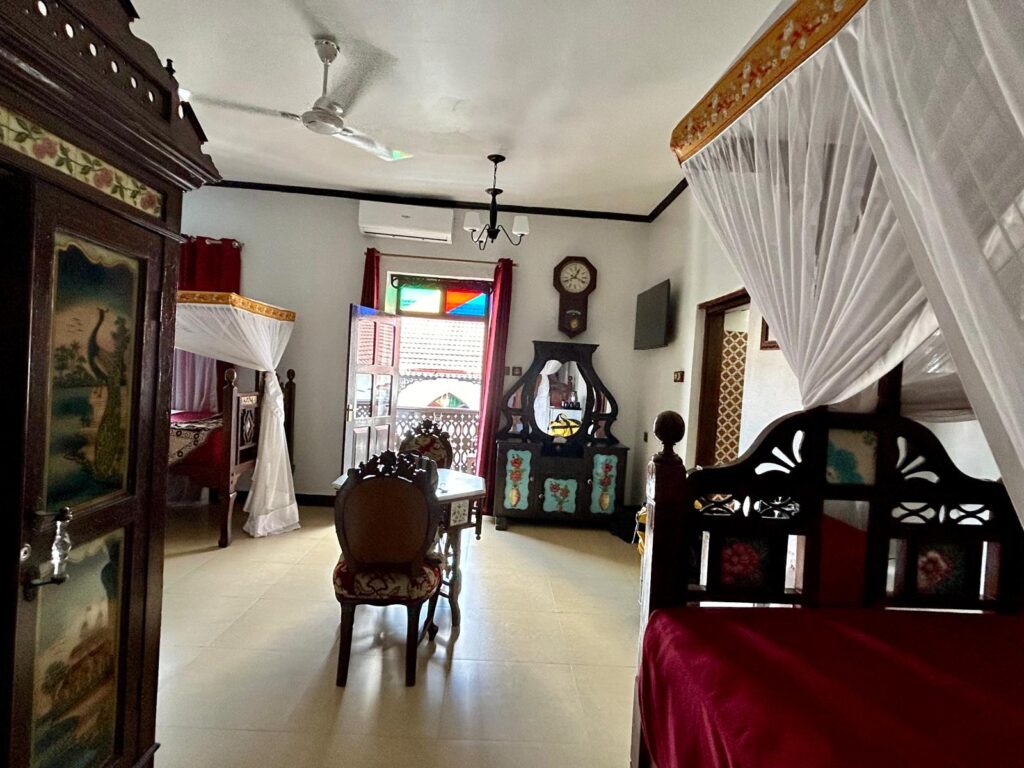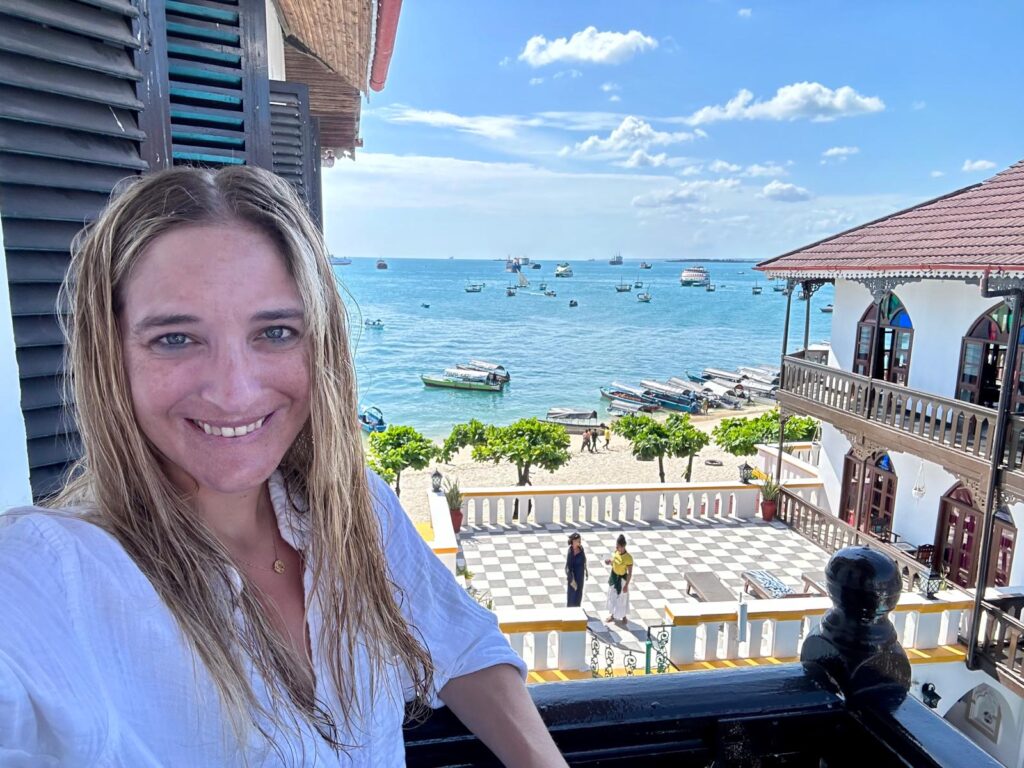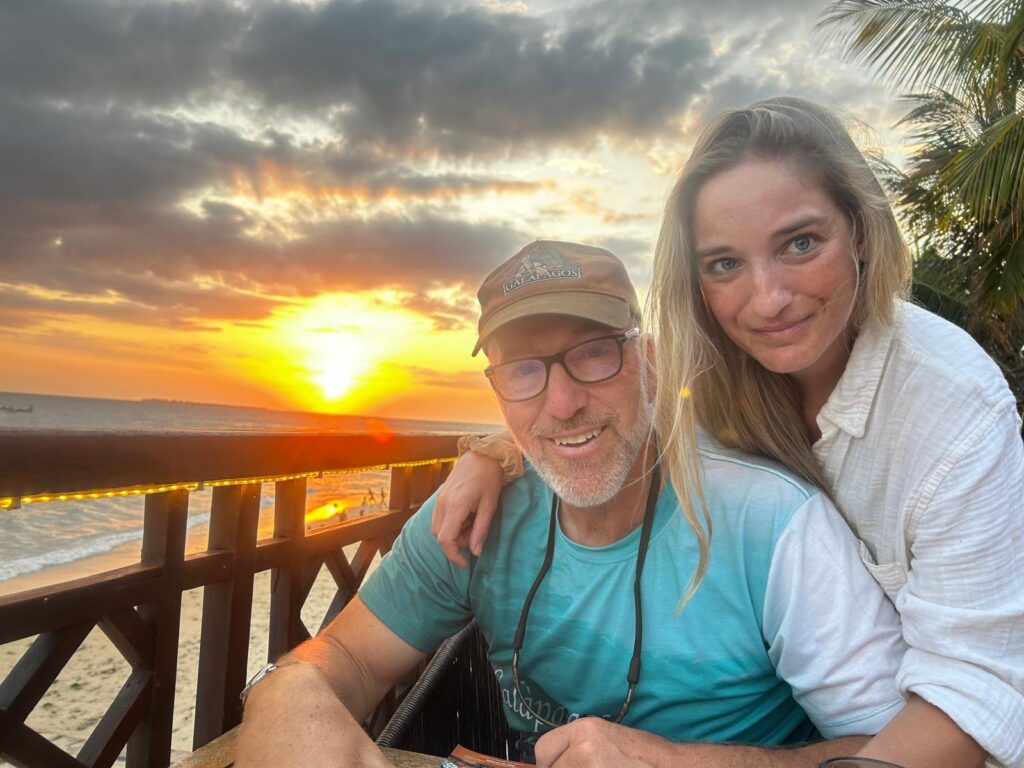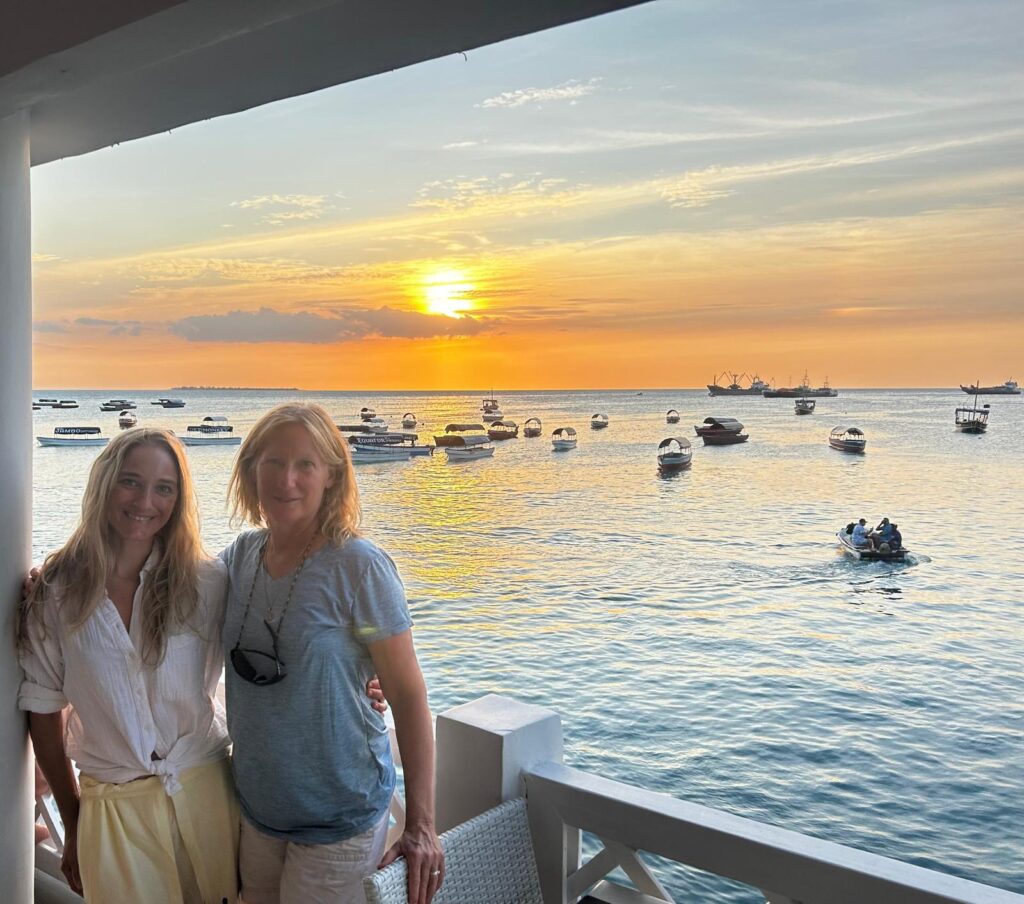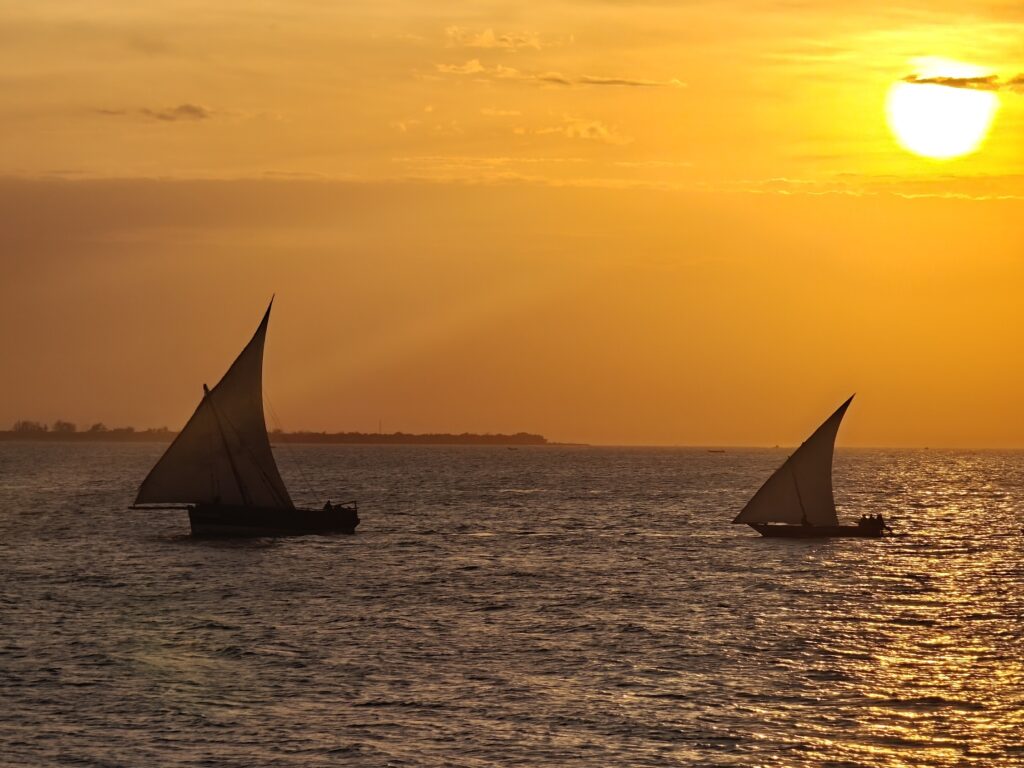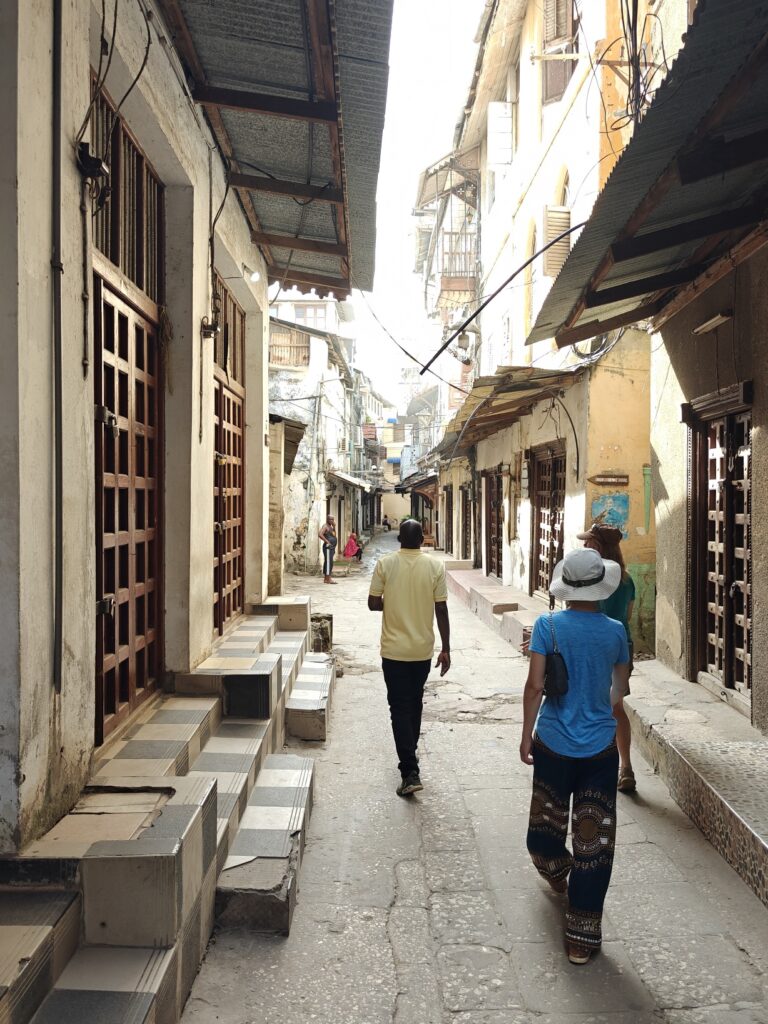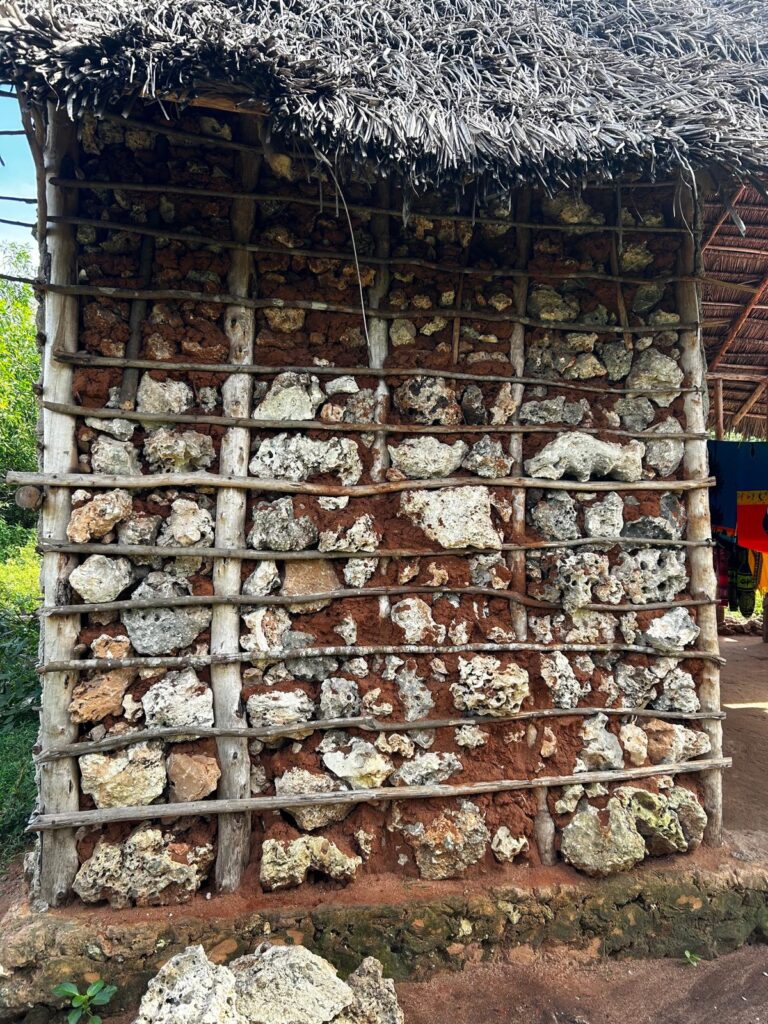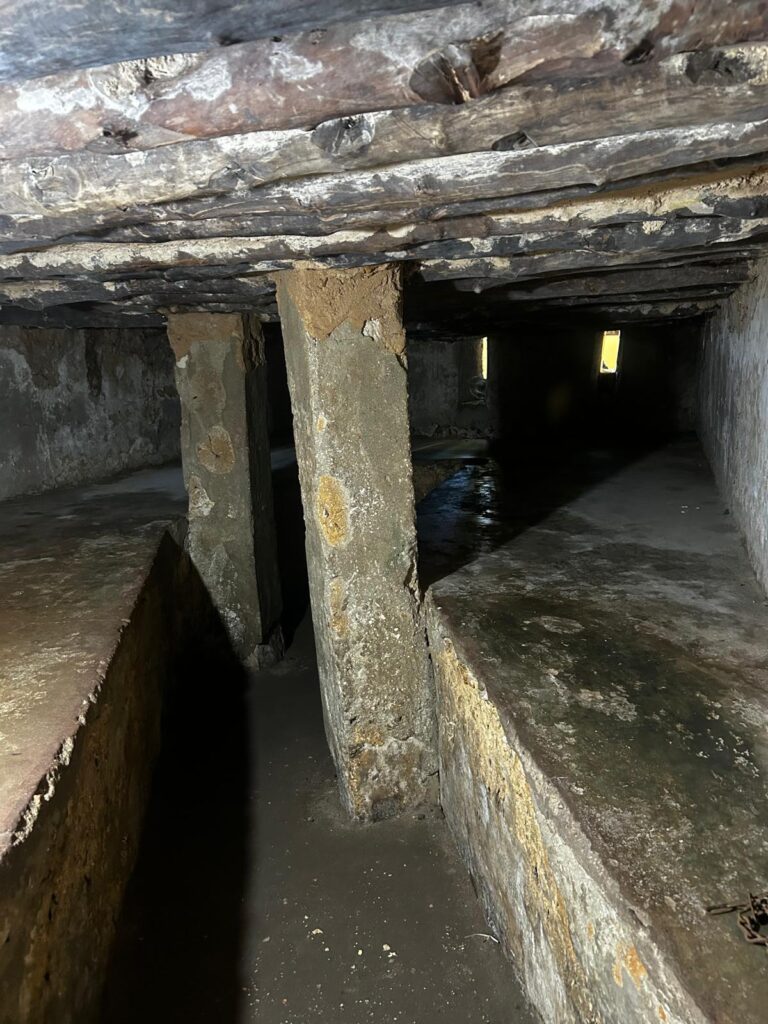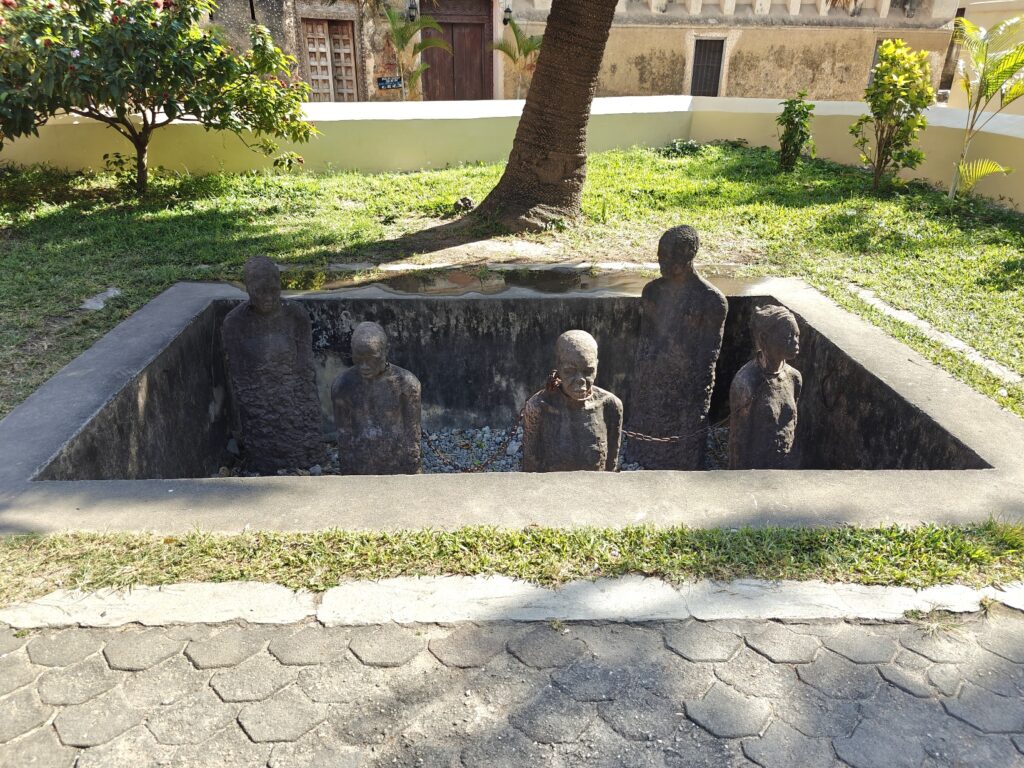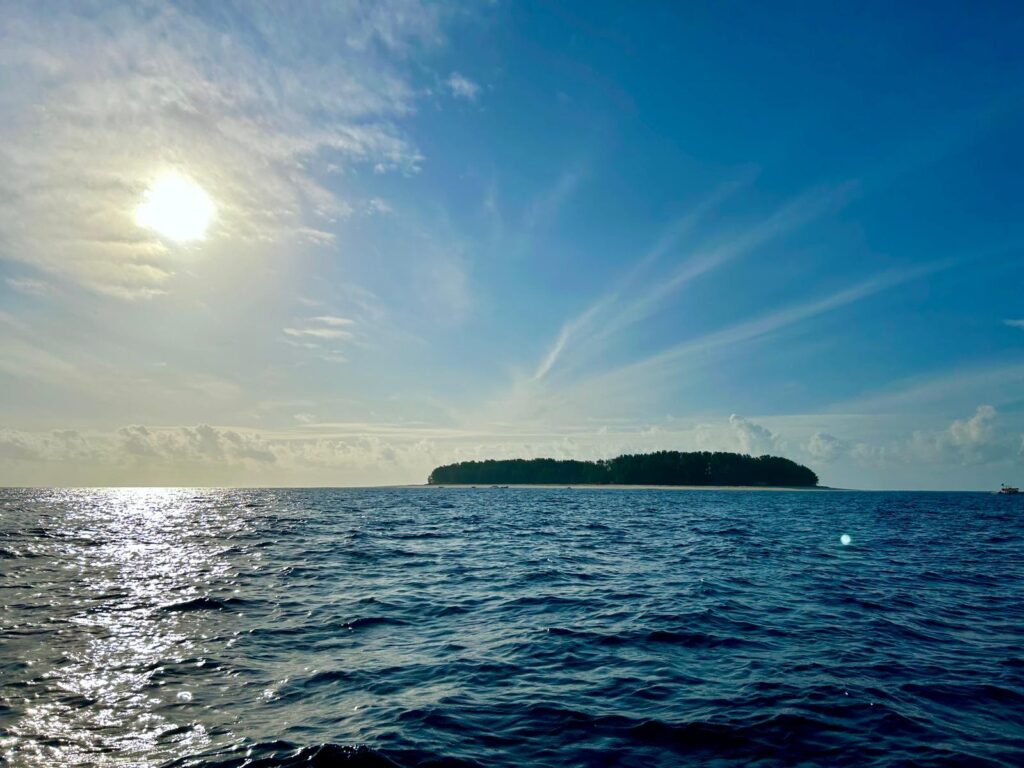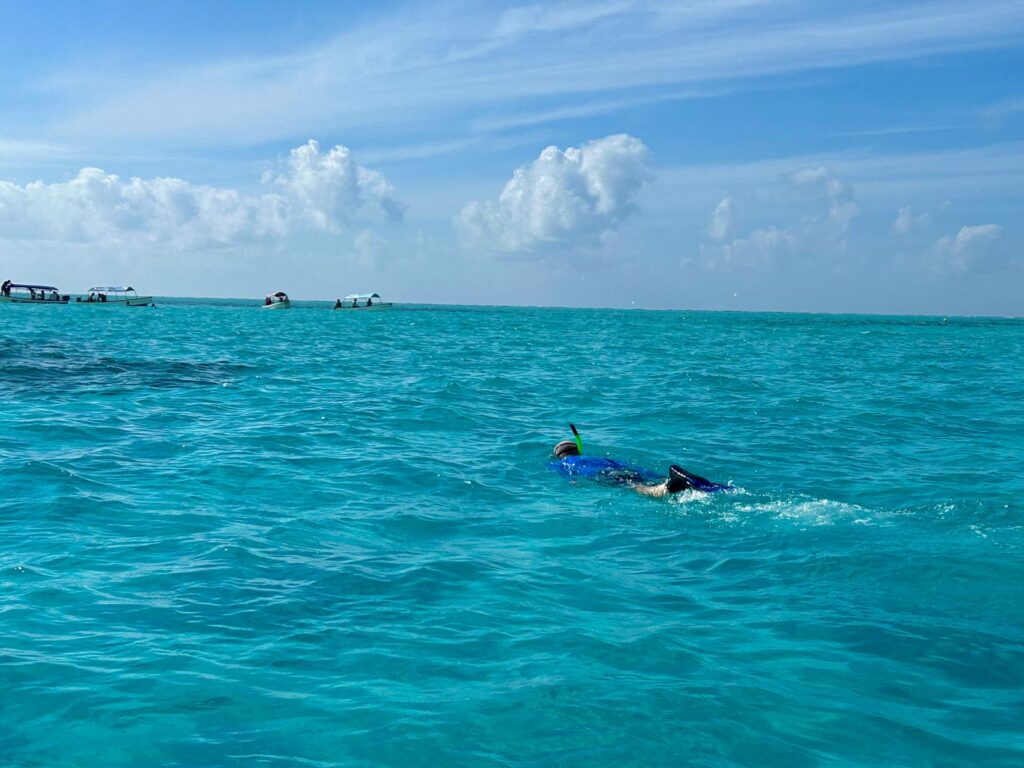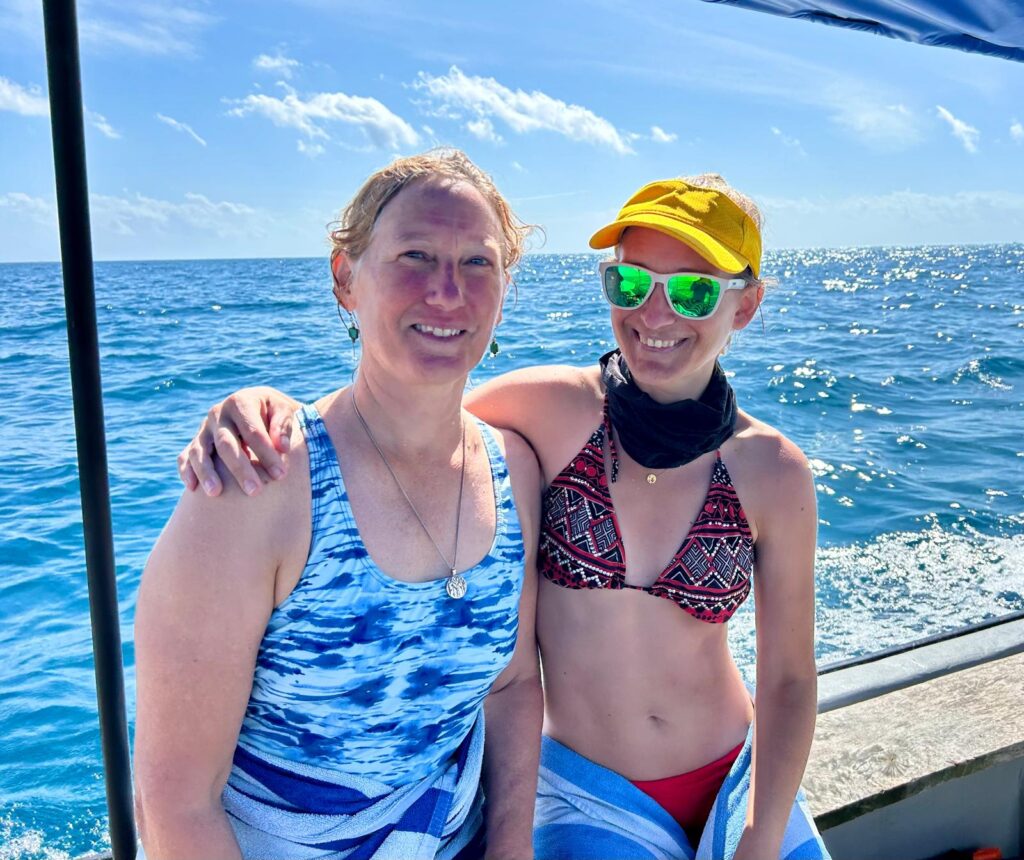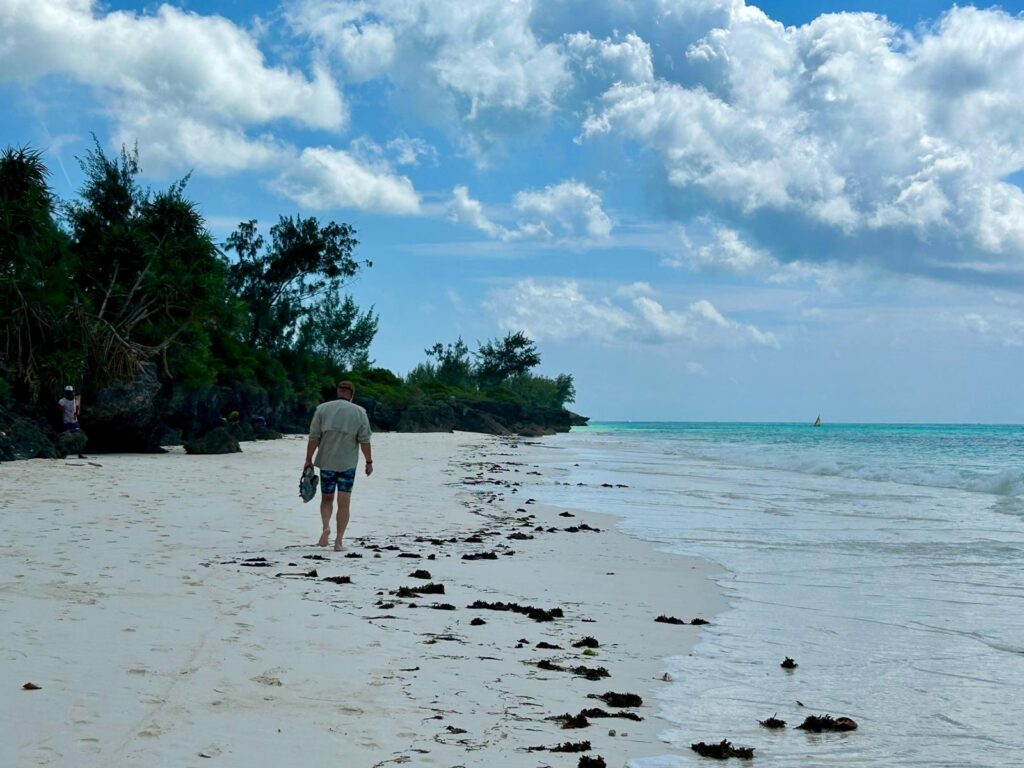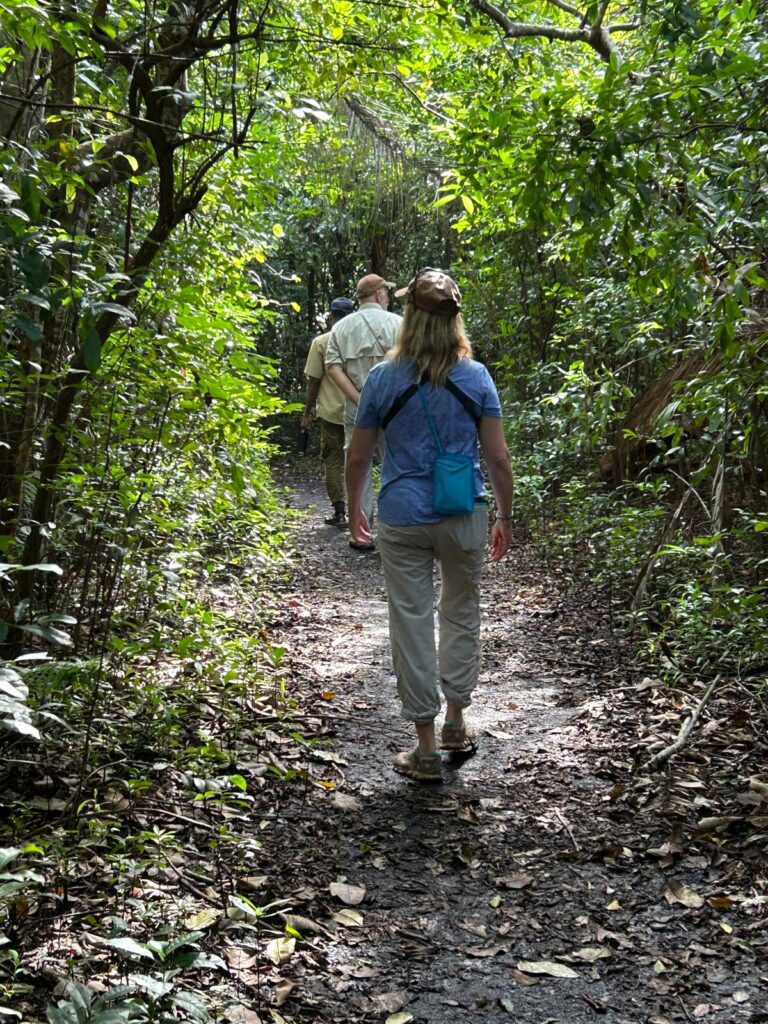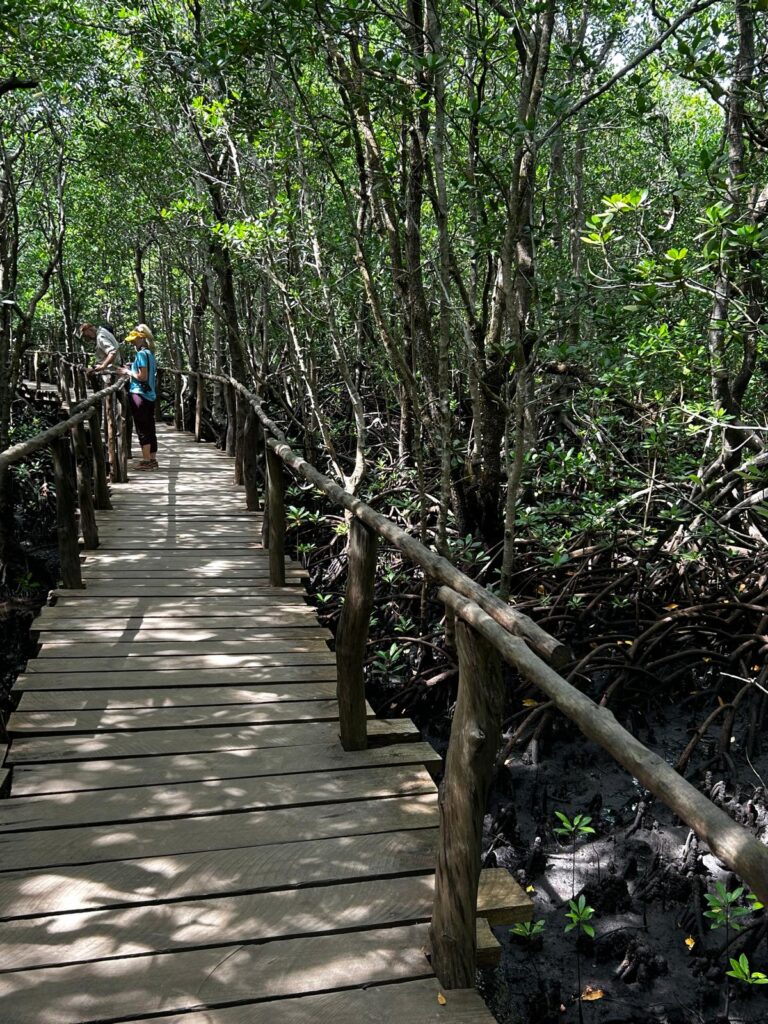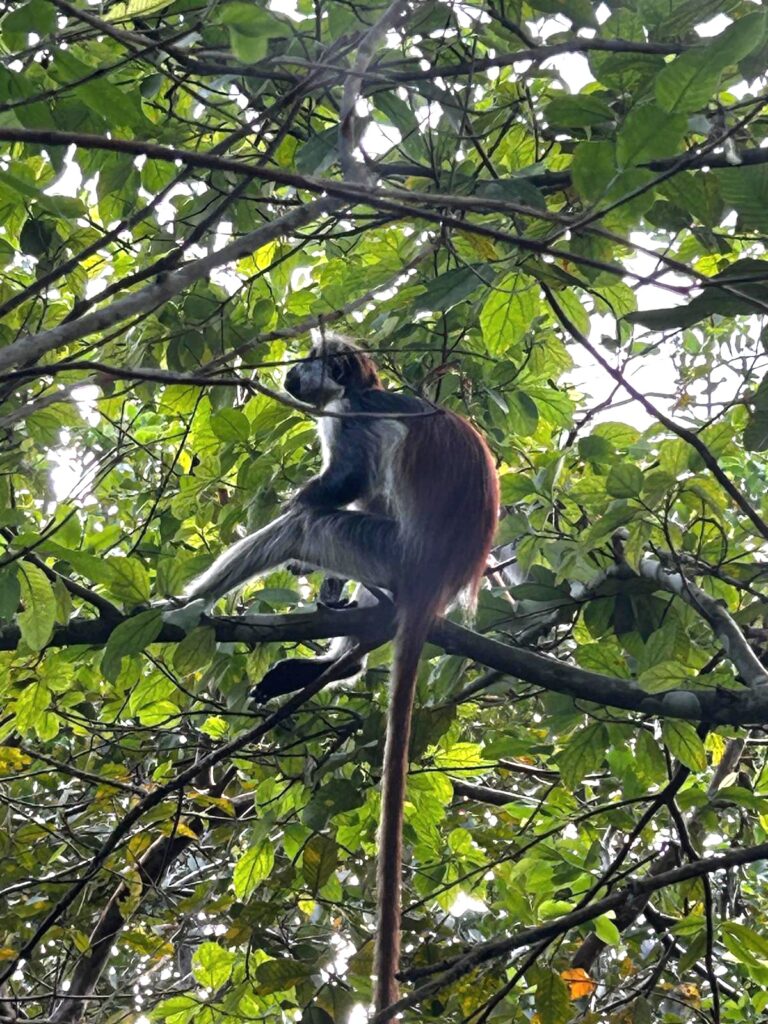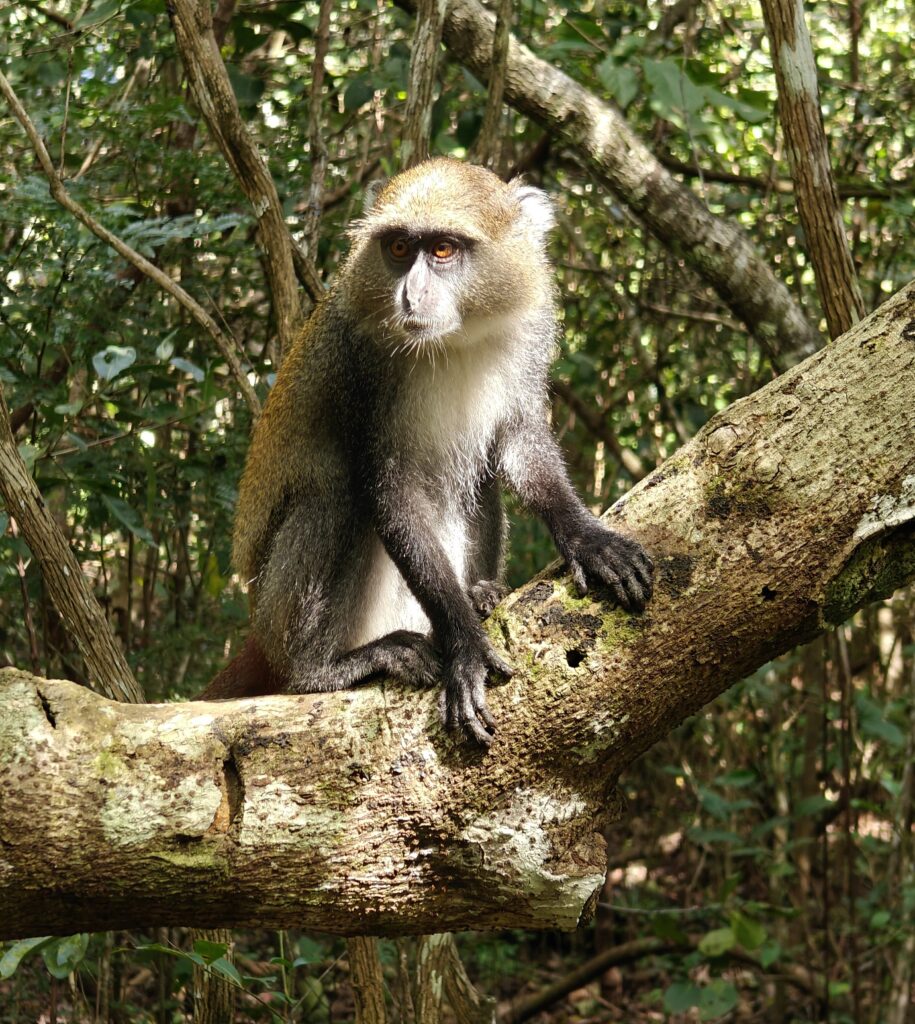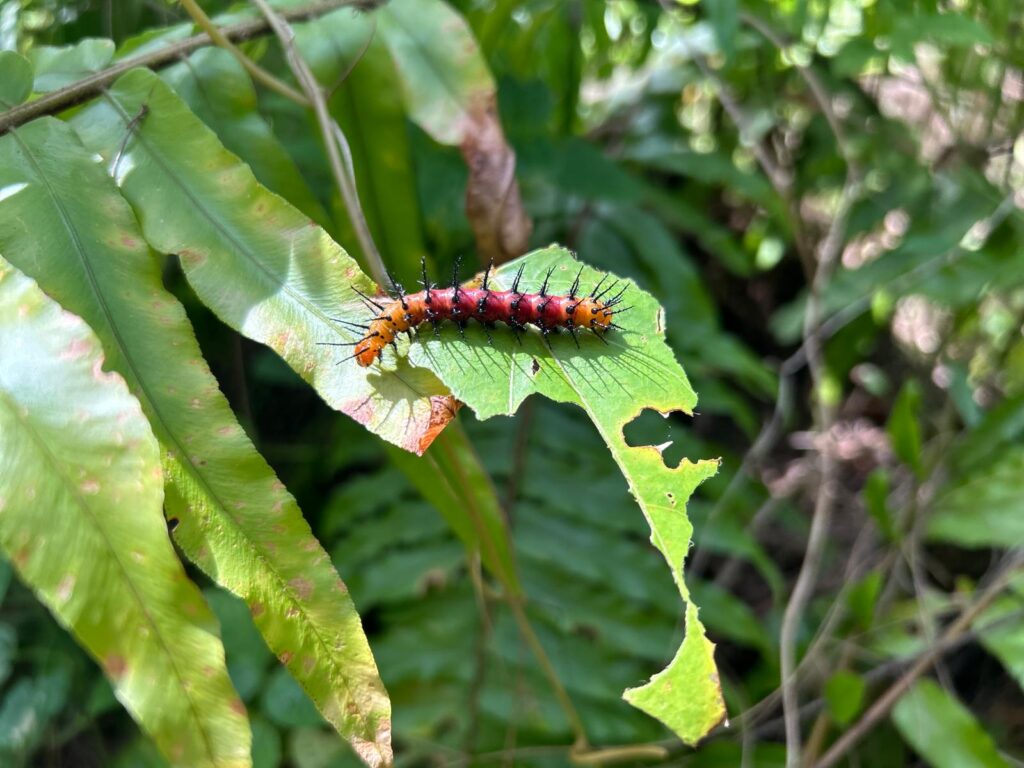After leaving my little gem of a campsite at Kilwa, after being delayed by my primary car battery failure, I made my way south to the southern most point on the coast of Tanzania:

My destination was the Mnazi Bay-Ruvuma Estuary Marine Park and the Msambiti Penninsula. The road was a pothole nightmare once again, but I wont sour this post with more whinning about that. The Park, established in 2000, encompasses a narrow sliver of coastline along the southern coast bordering Mozambique. The area covers 251 square miles, of which one-third is on land. The marine environment within the park is exceptionally diverse and includes mangroves, rocky and sandy shoreline, mudflats, salt pans, fringing coral reefs, lagoonal patch reef, seagrass beds, three islands and numerous small rocky islets.
Interestingly, close to 3,000 or 30,000 people (depending on the source) live within the “Park”, depending mainly on marine resources for their livelihoods; the park includes in its boundaries 11 villages and 8 sub-villages. There are few opportunities for development, hence poverty is rife. This has created an over dependence on marine resources and the persistent use of destructive fishing methods. Indeed, between the ubiquitous human development on the penninsula and the unconstrained fishing that I observed, there really isn’t any “Park” to this Park other than a name on the map and an opportunity to extract money from non-resident tourists like me. This is another pet peave of mine: Parks that don’t really protect the environment from human uses and yet charge an arm and a leg for non-residents to access. This Park is a classic example of this. To make matters worse, natural gas was discovered in Mnazi Bay in 1982, and wells were brought into operation in 2006. Gas from the wells all over the penninsula within the Park is now piped to the mainland within the Park where there is a big gas processing plant. If I had known it was going to be this un-Parklike, I probably would not have made the extra drive to get down there.
On a positve note, I camped in another delightful beachside location at a private lodge and it cost only $8 USD. I had the place to myself except for a nice German family with two young children and a grandpa that stayed in one of the cottages. Unfortunately, as with my previous campsite, I didn’t have a lot of time to enjoy the site other than an evening, as I was off early morning to go on a whale-watching boat ride with the German famil – despite the fact that they were christian missionaries. You will have to watch the video to see my campsite, as I forgot to take a picture. The target of the whale watching trip was humpback whales, which come to these nearshore waters beginning this time of year to give birth before heading back south to colder waters for feeding. Apparently, the whales had been seen recently were almost certain to see them – according to Park staff and boat captian ???? – but we saw none after about 2 hours of looking. We did see some spinner dolphins but I suppose the highlight was the gorgeous sunrise:



My purpose on the Penninsula was actually not whale watching – that was unexpected – but rather snorkling on the nearshore coral reefs. After the boat trip I spent a couple hours snorkling on beautiful coral heads just off the beach. Unfortunately I don’t have underwater pictures to share as I don’t have an underwater camera, but the reef was in moderately healthy condition (patchy) but there were lots and lots of colorful fish and the water was shallow and clear so visibility was great. Needlesstosay, I had the entire reef and beech to myself. Here’s the beach where I snorkled in the waters just offshore:

I was planning on spending two nights on the Penninsula but then realized that my drive the following day would have been 10-12 hours. No way could I handle that with the often stressful driving, so I left the Penninsual and headed west towards my destination, Songea, before then turning south to enter western Mozambique. After driving several hours I stopped before sunset at a “wild” campsite identified on my trusty iOverlander app. It was a rock quarry next to a rocky hilltop right off the highway. Looked good, so I started to set up when a local showed up on the rock above. I later learned that the locals come to this high point in the evening to make their cell phone calls as the reception is good there. Before long there was probablly 8 men looking down on me from the rocks. OK, probably not the safest and wisest place to spend the night since technically I was tresspassing. Fortunately, the first man there was a secondary school biology teacher at the community-based school in the tiny village of Lumesule just over the hill and we got to talking and he invited me to spend the night at the school grounds. So, I packed up and we headed to his school.
I met several of the other teachers and staff and was surrounded by hundreds of young boarding students for a while before a couple of the teachers walked me into the village center to show me around. Not much to the village center other than one small fruit stand selling only banana’s, and a pool table for the young, mostly jobless, 20-year old men to spend their evenings. In 2-3 hours of discussion, I learned a lot about the community-based school, local, national and international politics and economic challenges, and of course football (i.e., soccer). The English teacher, who barely spoke English, tried to get me to stay through the weekend to talk to the students in proper English, but I simply couldn’t comply given my plans ahead.
Overall, the school is a sad and depressing situation, and it would be easy to want to help out financially and otherwise, but then you realize that there is a school just like this one every several kilometers down the road and it feels hopeless. In this case, for this tiny village, there are 300 students, half of whom board, and 17 teachers. The students have to help with all the capital improvements and facility maintenance on top of their “studies”. They even have to carry water by buckets up from the nearby river to meet their water needs. Most of the parents don’t support sending their kids to secondary education but fear government repercussions if they don’t, so they do, and the kids treat learning and using English as a form of punishment, so nearly all of them lose all English skills once they leave school – as was demonstrated in our visit to the village. Worse, only about 10 out of 300 kids will go on to any form of higher education because the parents and community largely don’t realize the benefits of doing so. So 90% of them are stuck in the same poverty-striken life of their parents with no aspirations to change that. It’s heartbreaking because the kids simply don’t know any better and they are getting no incentives or encouragement to improve themselves and their livelihoods through higher education. Instead, 100% of them (I learned) simply fall back on their religious beliefs (75% muslim, 25% christian) to justify their lot in life. Religion as an escape goat to justify suffering in this life is one of the great lies of religion in my opinion.
Here’s an early morning photo of my site before the students got up as I left early in the morning:

Here’s a composite video with a clip of my Msambiti campsite, snorkling site and the school grounds at Lumesule:
Msambiti and beyond composite (4 minutes)
OK, off to Songea for a night in town and then south to Mozambique. Cheers.
